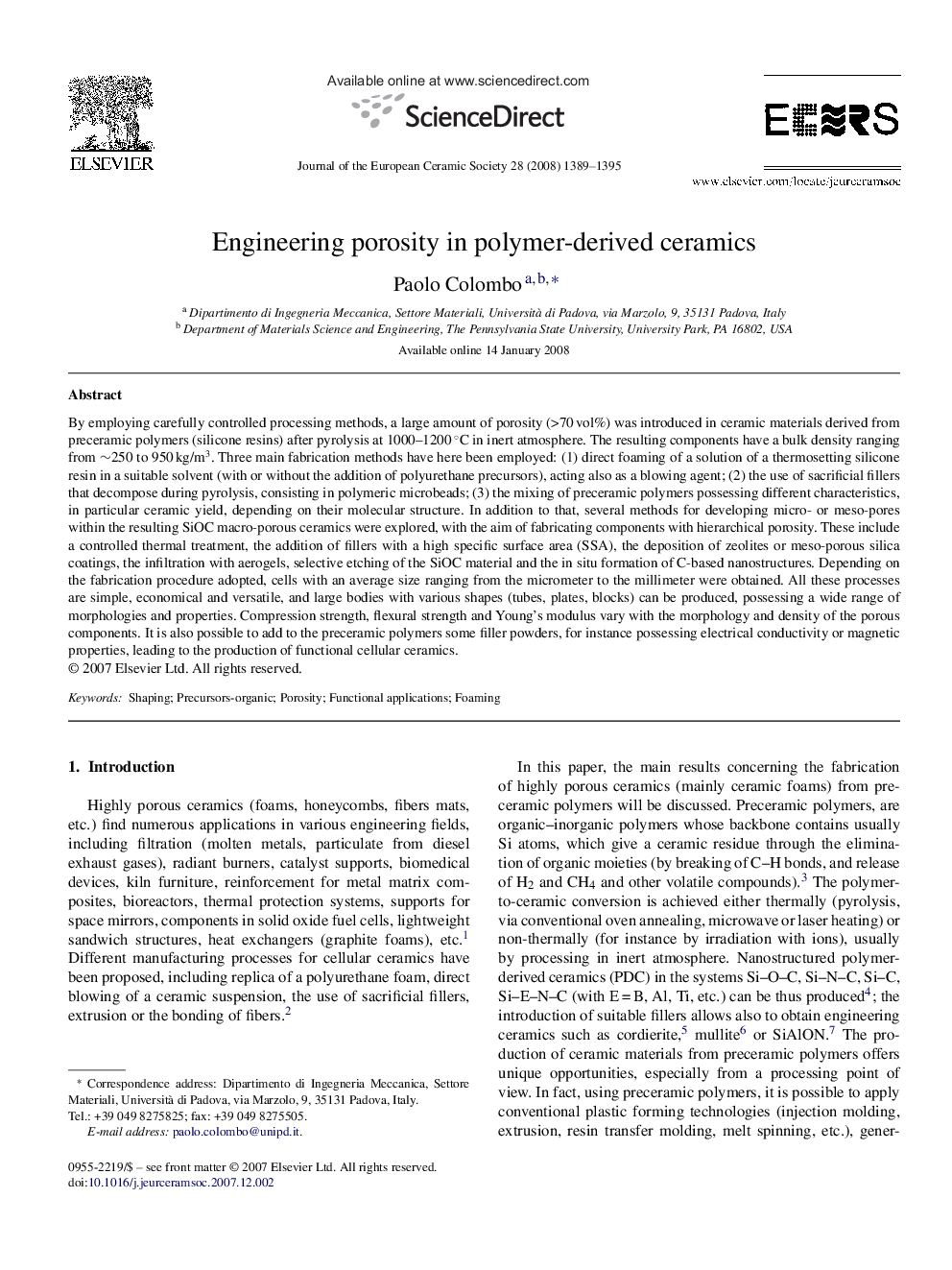| کد مقاله | کد نشریه | سال انتشار | مقاله انگلیسی | نسخه تمام متن |
|---|---|---|---|---|
| 1476741 | 991161 | 2008 | 7 صفحه PDF | دانلود رایگان |

By employing carefully controlled processing methods, a large amount of porosity (>70 vol%) was introduced in ceramic materials derived from preceramic polymers (silicone resins) after pyrolysis at 1000–1200 °C in inert atmosphere. The resulting components have a bulk density ranging from ∼250 to 950 kg/m3. Three main fabrication methods have here been employed: (1) direct foaming of a solution of a thermosetting silicone resin in a suitable solvent (with or without the addition of polyurethane precursors), acting also as a blowing agent; (2) the use of sacrificial fillers that decompose during pyrolysis, consisting in polymeric microbeads; (3) the mixing of preceramic polymers possessing different characteristics, in particular ceramic yield, depending on their molecular structure. In addition to that, several methods for developing micro- or meso-pores within the resulting SiOC macro-porous ceramics were explored, with the aim of fabricating components with hierarchical porosity. These include a controlled thermal treatment, the addition of fillers with a high specific surface area (SSA), the deposition of zeolites or meso-porous silica coatings, the infiltration with aerogels, selective etching of the SiOC material and the in situ formation of C-based nanostructures. Depending on the fabrication procedure adopted, cells with an average size ranging from the micrometer to the millimeter were obtained. All these processes are simple, economical and versatile, and large bodies with various shapes (tubes, plates, blocks) can be produced, possessing a wide range of morphologies and properties. Compression strength, flexural strength and Young's modulus vary with the morphology and density of the porous components. It is also possible to add to the preceramic polymers some filler powders, for instance possessing electrical conductivity or magnetic properties, leading to the production of functional cellular ceramics.
Journal: Journal of the European Ceramic Society - Volume 28, Issue 7, 2008, Pages 1389–1395